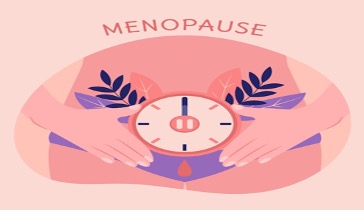Image by Freepik
1. Introduction
Questions are being raised about the role of the law in dealing with issues associated with the menopause in the workplace following the recent publication by the Equality and Human Rights Commission (EHRC) of the Guidance on the Menopause for Employers. The Guidance refers to the possibility of using discrimination law, in particular the disability provisions, to help women request adjustments in the workplace, and claim harassment if they are subject to unwelcome comments or behaviours because of the symptoms they are experiencing. This blog considers how the current legal framework needs some rethinking and adaptation given the number of workers affected by the menopause and the types of issues that have been raised in the workplace as a result.
2. Menopause and its impact in the workplace
Menopause is anything but a novelty. It is a normal and inevitable part of ageing. It affects all people who have a menstrual cycle (which includes transgender and non-binary people). During this period, oestrogen levels decline and menstruating stops. Menopause is not a clear-cut moment: on average it starts at 50 or 51, although it might happen earlier, even between the age of 40 and 45. Furthermore the lead-up to it, perimenopause, can take up to 10 years and the post-menopause period can last 5 or more years – potentially as long as 15 years. During this period women can experience a variety of physical and mental symptoms: hot flushes, sleeping difficulties, but also mood swings, low self-esteem or the so-called ‘brain fog’, namely problems with memory or concentration, to name a few. These do not affect all women in the same way. For some women, these symptoms are mild, and they can carry on with their lives. But for other women they can be severe, and in certain situations even debilitating, and have serious consequences on many areas of their life. Yet, traditionally, menopause was not a topic that was discussed, let alone regulated, but things have changed. Today, there is a growing awareness and understanding of menopause. To start with, women themselves are more aware of what is happening with their bodies. Since 2009, the International Menopause Society (IMS) with the World Health Organization (WHO) has designated October as World Menopause Awareness Month. Menopause has also been increasingly discussed publicly, including through television programmes, books, dedicated magazines, and by Parliament.
The extent of the impact of menopause in the workplace is considerable because of the ageing and more feminised workforce. Indeed, according to the government, women over the age of 50 represent the fastest-growing segment of the workforce. Moreover, research by the Chartered Institute of Personnel Development (CIPD) shows that two-thirds of women between the age of 40 and 60 who experienced menopause symptoms report that those symptoms had a negative impact on them. In 2022, the Women and Equalities Committee produced a comprehensive report on Menopause and the Workplace, where it warned that menopause was causing the UK economy to ‘haemorrhage talent’. Studies from the Fawcett Society highlight that women who experience menopause symptoms tend to either shy away from raising the issues with managers, withdraw from the labour market altogether (one in ten working women) and, in a few cases, litigate in courts about the way they have been treated because of menopause. In the same report, eight out of ten women remarked that their employer had not shared information, trained staff, or put in place a menopause absence policy. Conversely and as result of raising public awareness, there are also many examples of good practice such as a Menopause Workplace pledge signed by many large employers, and many workplaces where menopause policies have been introduced.
3. Existing guidance on menopause and the role of Equality Law
The questions triggered by the new, very practical, EHRC Guidance on the Menopause for Employers are symptomatic of the debate around menopause and the law in the workplace. On the one hand, advice to promote good practice already exists, for example from ACAS and now the recent guidance from the EHRC. Such guidance is welcome because it seeks to clarify for employers what their legal obligations are and ‘provides advice on how they can best support their staff’. It refers to equality law and risk assessment under health and safety laws. On the other hand, there is no specific legal instrument that currently addresses menopause as such, as there is, for example, for pregnancy.
As a result, the question is whether there should be a specific legal instrument that regulates the menopause in the workplace. So far, the few cases that have been decided by Employment Tribunals (some are discussed below), and guidance produced, refer to the use of equality law to tackle issues that women may have experienced. For example, they concern a lack of adjustment to address symptoms such as hot flushes, lack of sleep, or comments that are derogatory about women’s health or ability to work. Sex, age, and disability discrimination have been tools used in the legal box to assist women in the workplace when they encounter those scenarios. All of these grounds, however, have drawbacks when invoked as they either do not catch all people that may experience menopause, or raise some ethical issues about whether these should be the right tool for what is a normal stage of life.
Sex discrimination can be problematic as transgender and non-binary people can also experience menopause. Further, it could be argued that women are already stigmatised for being treated differently in other situations (pregnancy and maternity) and that this approach would be another struggle for recognition and adjustment which might have the unintended effect of increasing negative labelling. For some, menopause should not be labelled a ‘woman’s issue’ but simply stage of life that can be accommodated if necessary. Age discrimination is not necessarily well suited as younger people can also experience menopause. Early menopause can be brought on by a medical condition or procedure. Furthermore, if a complaint of direct discrimination on the grounds of age is submitted, there is another hurdle: employers can rely on the objective justification defence. Disability discrimination is the route that has been mostly used, especially as it leads to reasonable accommodation. It can, however, be challenging to engage as the definition of disability is fraught with difficulties, is time-consuming to evidence, and claimants might be reluctant to share intimate and personal details.
With that said, disability discrimination can still be used for long term and severe symptoms that affect day-to-day activities and a number of women have been successful in Employment Tribunals using this route. This was the case for menopause-related heat sensitivity (Ibolya Kun v Cambridge University Hospital NHS Foundation Trust); menopause transition symptoms such as very heavy bleeding, cystitis, severe anaemia, depression, feeling ‘fuzzy’, emotional and lacking concentration (Davies v Scottish Courts and Tribunals Service). In Donnachie v Telent Technology Services Ltd, typical menopausal symptoms were deemed to have an impact that was more than minor or trivial on the claimant’s day to day activities. Conversely, in the case of Rooney v Leicester City Council, Mrs Rooney’s claim of disability was quickly dismissed by the Employment Tribunal. However, the Employment Appeal Tribunal (EAT) considered that they had erred in law. The EAT held that the severe physical, mental, and psychological peri-menopausal and menopausal symptoms experienced by Ms Rooney amounted to a disability. These included insomnia, fatigue, light headedness, confusion, stress, irritability, depression, anxiety, dizziness, incontinence, palpitations, memory loss, concentration problems, low self-esteem and confidence, migraines and hot flushes. So far, this is the only authoritative judgment on the issue for Employment Tribunals to use as guidelines.
The above cases show that there could be value in a disability approach, especially where the symptoms of menopause are long-term and affecting significantly a person’s life. It is also arguable, however, that menopause should not always necessarily be seen by law as a disability as it is a normal part of the life cycle – just like in the case of pregnancy where it was held that pregnancy is not an illness. The Women and Equalities Committees had evidence that some women would find it unpalatable to prove that they were disabled to have access to protection.
4. Different legal options?
The technical and moral shortcomings of the current law warrant discussions on how the menopause concerns raised in the workplace could be addressed. There are clearly difficulties and complexities in shoe-horning menopause into one single characteristic. A suggestion of creating a new protected characteristic of menopause in the Equality Act 2010, like pregnancy, is defendable given how many workers menopause affects. All women and people menstruating will experience menopause, but not all women will experience pregnancy. Furthermore, while all women will experience menopause, they will not necessarily experience the same symptoms. The new protected characteristic would not necessitate a link to sex or age and would avoid having to get over the technical hurdles of the definition of disability. This would cover those who experience symptoms caused by the onset of menopause and peri-menopause and those who have the menopause, regardless of the age at which these symptoms occur. The personal scope would therefore be wide and would take account of the intersectionality of menopause (often age and sex).
The difficulty in creating a single ground is two-fold. First it might be an uphill battle to find the political power to convince the legislator to add another ground of discrimination against the tide of what would be perceived as additional burden on employers. In fact, the current government has already turned down this proposal when made by the Women and Equalities Committee. The argument was that it ‘might well provide an unhelpful distraction for employers from what they actually should be doing, which is complying with existing law and familiarising themselves with the guidance’. An additional problem is the operation of the new protected characteristic, in particular the practicalities of defining menopause. For example, there would need to be some consensus of what constitutes menopause to engage the law, potentially diving back into issues related to disability, the use of medical models, and evidencing the criteria of the condition.
The Women and Equalities Parliamentary Committee advocated another reform which was the activation of section 14 of the Equality Act 2010. The section would allow claims of discrimination on a combination of two protected characteristics. The appeal of this proposal is that, by acknowledging that menopause is an inherently intersectional phenomenon, it would strengthen the position of those facing menopausal issues in the workplace. However, the Government did not share this position. It was reported that to bring a claim on more than one ground would ‘introduce unwelcome regulatory complexity and place costly new burdens on business and the public sector’.
A final option may be to consider a positive duty approach, as has been recently adopted for sexual harassment. Following a report by the Women and Equalities Committee in 2018, and consultation from the government, the Worker Protection (Amendment of Equality Act 2010) Act 2023 (adopted in October 2023 and due to come into force from October 2024) introduced a duty on employers to take reasonable steps to prevent sexual harassment in the workplace. A one-year implementation window has been given to employers to allow time to review policies on sexual harassment, provide training, and consider other measures. If employers fail to take reasonable steps to prevent sexual harassment, the Equality and Human Right Commission can take enforcement steps. An individual cannot claim a breach of the duty, but a successful Tribunal claim for sexual harassment will be subject to a compensation uplift of up to 25% if the duty was breached. There is an emphasis on prevention and redress beyond the individuals affected in the case. It could be envisaged that a similar model could be deployed in the context of menopause. The positive duty would include adopting or reviewing relevant policies, undertake risk assessment, raise awareness and provide relevant training.
As a result, legitimate queries are raised as to whether a specific law could or should be involved to serve the needs of those affected by menopause – certainly in light of recent political discourse. Soft law may perhaps play a significant and complementary role to the current tool box described by the EHRC. In addition to the existing legal instruments (equality and health and safety law) a new ACAS Code of Practice may be a positive starting-point to accommodate those who experience menopause. As symptoms vary and are experienced differently, raising awareness of menopause in the workplace might also be a fitting tool with a new Code of Practice explaining what best practice look like for employers and employees. In the words of ACAS, such codes ‘set the minimum standard of fairness that workplaces should follow’. They supplement existing duties and constitute good practice. This is the case for the Code of Practice on handling in a reasonable manner request to work flexibly, recently updated for application from April 2024.
A new Code would present a number of advantages. First, it could put flesh on the existing obligations in law in relation to menopause. Second, it could embed some of the good practices that have been identified by ACAS, such as having a menopause policy. The Women and Equalities Parliamentary Committee had recommended that the government produce a model menopause policy, which was also rejected in 2023. Third, there could be references to the use of flexible working requests to assist women experiencing some of the symptoms. The right to request flexible working may be particularly useful to deal with temporary changes linked to menopause. It has recently been reviewed through the Employment Relations (Flexible Working) Act 2023 to allow immediate access to it (from day one rather than after 26 weeks of employment) and it can be used more than once in a year. Employers will also have to respond quicker to requests. Accommodating employees who experience menopause symptoms through home working or temporary reduced hours may assist with retention, for example. Fourth, risk assessments could be required. They are already done for pregnancy and are already recommended by the EHRC and ACAS for menopause. Fifth, the policy could include how to deal with absence for menopause and time off for medical appointments linked to menopause. It has been argued, by trade unions notably, that absence for menopause should not be recorded as sickness. Sixth, while not enforceable, Codes of Practice are used by Employment Tribunals when deciding on relevant cases. Finally, the Code could re-iterate that, in the worst case of symptoms where disability may follow, even temporary reasonable adjustments should be considered.
A new Code of Practice may not assist with stigma or negative attitudes, where women may be subject to derogative comments or stereotypical reactions about absences or productivity when they experience menopause symptoms and report them. The law on harassment could potentially be used here, either on the grounds of disability, sex or age (acknowledging the shortfalls of the current legal system described above).
5. What is next?
Further reflection is needed as the law lags behind. In some workplaces and industries, good practices are already in place and may need further advertising with training of employers and the judiciary. Meanwhile, trying to rationalise and mainstream how the subject of menopause is addressed in the workplace could be the subject of an ACAS Code of Practice, promoting good practice, demonstrating the need for a menopause policy, and re-enforcing what other legal protections are already available.
The current government mainly responded to the recommendations (soft and hard law) of the Women and Equalities Select Committee by establishing a Menopause Employment Champion in March 2023. Helen Tomlison’s remit and duties include ‘driving awareness of issues surrounding menopause and work while promoting the benefits for businesses and the economy when women are supported to stay in work and progress’. It is therefore positive to see that menopause policies are at the heart of the work she will undertake. In October 2023, a report of her activities was also made public. Speaking to employers and continuing to raise awareness through partnerships with CIPD and ACAS to develop case studies are among the work undertaken so far. A plan has also been developed including sharing employers’ best practice on a portal accessible to all.
Whilst these flagship initiatives are essential to reach employers, it may also be time to pull all the resources together in a more comprehensive fashion to make the law (soft and hard) clearer to employees and employers. At the prospect of a General Election by the end of 2024, the current Labour Party New Deal for Working People Green Paper does not mention menopause, but in February 2023, it indicated that it would introduce a policy requiring large organisation to publish a menopause action plan setting out how they are supporting employees experiencing menopausal symptoms. This would be complemented by guidance to help women in small and medium sized enterprises.
Clearly, menopause is on the political and legal agenda. However, questions about protecting those who are ill-treated at work, or think that they may be, in relation to menopause are not yet clearly answered by the legal framework.
Thank you to the UK Labour Law blog co-editors for their very valuable comments and to Lisa Rodgers for her feedback
About the authors

Pascale Lorber is an associate professor at Leicester Law School. Her research interests lie in employment law and encompass collective voices at work as well as equality, in particular work life balance and the menopause

Eugenia Caracciolo di Torella is a Professor at Leicester Law School. She researches in caring and the law and has a special interest in gender, work life balance and the menopause.
(Suggested citation: E Caracciolo di Torella and P Lorber, ‘Is There a Place for Law to Regulate Menopause in the Workplace?’ UK Labour Law Blog, 8 March 2024 available at https://uklabourlawblog.com/)
